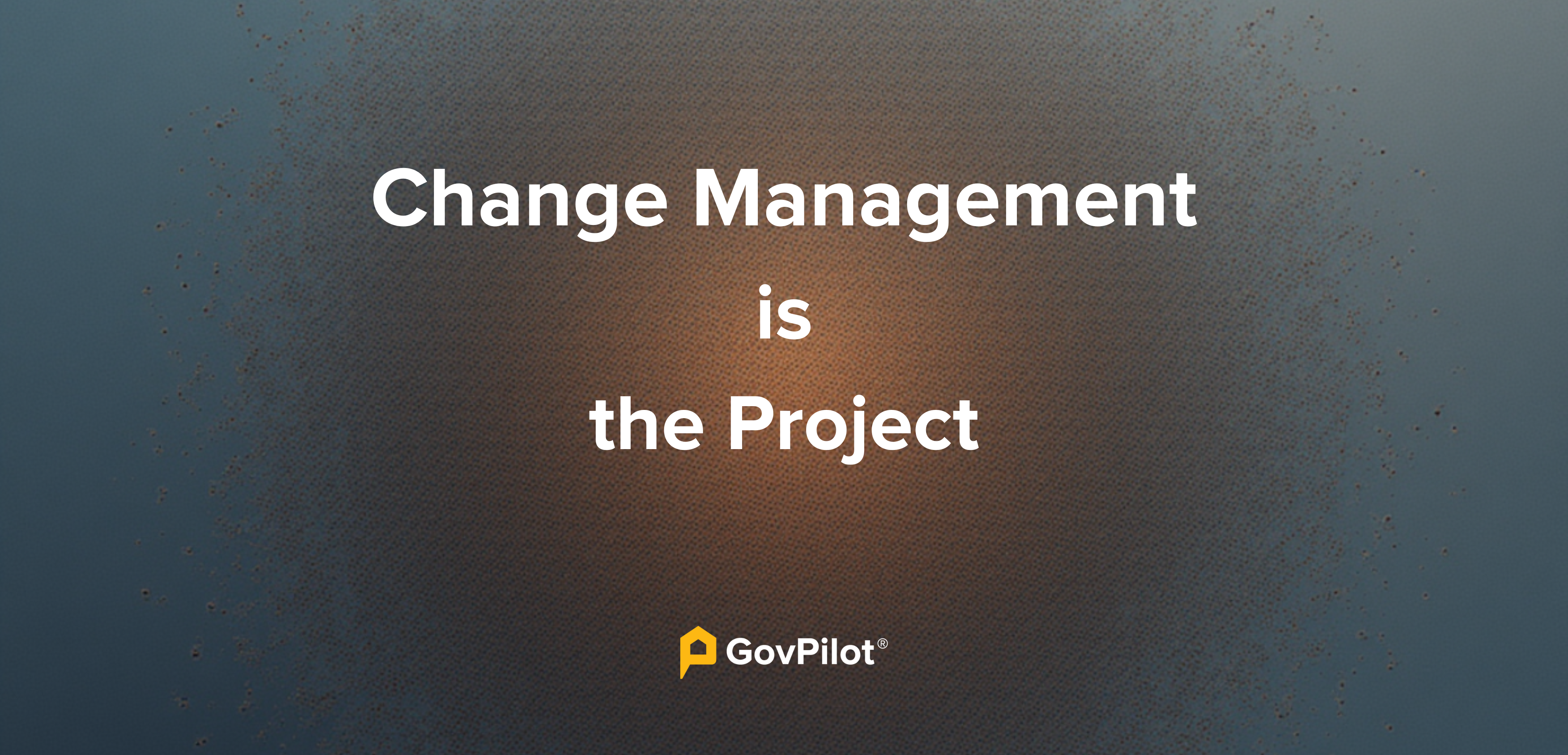A practitioner's guide to adopting a new platform
Adopting modern government software promises faster service, fewer backlogs, easier reporting, and better transparency. But implementations can limp along with poor adoption or succeed only after painful false starts that could have been avoided.
Why Implementation Can Fall Flat
Here are six pitfalls to plan against (and what to do instead), according to the International City/County Managers Association.
- Excluding end-users from the process When end-users aren't involved early, expect resistance later.
Instead: Implement with people, not to them. - Poor communication and misalignment If leadership and staff aren't aligned, confusion and pushback follow.
Instead: Keep communication clear and continuous. - Under-resourcing and inadequate planning Underestimating costs or timelines sets the team up to fail.
Instead: Budget time and money for onboarding, training, and full support. - Weak leadership and accountability gaps When leaders disengage, everything downstream collapses.
Instead: Secure executive buy-in and track milestones consistently. - Analysis paralysis and perfectionism Endless refinements stall progress.
Instead: Launch, learn, and iterate. - Treating security as an afterthought Overlooking compliance and data protection invites future crises.
Instead: Make security non-negotiable. Use SOC 2 Type II solutions with MFA and build data security into staff training.
A Realistic Playbook for Successful Adoption
1) Start with the problem, not the product. Frame the project around which process will improve and define measurable outcomes. Confirm political will before the RFP. Reasonable benchmarks for improvement might be 30–40% faster processing in one year; 20–30% online uptake; and/or 10–15% staff time savings.
2) Engage practitioners early (but set boundaries). Involve clerks, inspectors, and field staff from the start. Assign a process owner per module, set a clear decision hierarchy, and meet regularly.
3) Pilot first, then scale. Start with one department and document everything for replication. Budget equal support for all departments and allow time for full rollout.
4) Train 2 to 3 times more than you think you need. Record sessions, create searchable videos and laminated guides, schedule refreshers at 90 days, 6 months, and 12 months, and designate backup super-users.
5) Address procurement and long-term costs early. Model 10-year total cost with 4% escalators and a 20% contingency. Demand all-in pricing and identify funding before the RFP. When evaluating vendors, confirm:
- Modular pricing
- API integrations
- SOC2 or ISO certifications, penetration testing, and data encryption
- RBAC and data backup frequency and procedures
- Reference customers of similar sizes and complexity
- True cost of ownership: implementation fees, annual subscription, integration costs, training, ongoing support, and price escalators
6) Prioritize cybersecurity and records management. Match vendor retention policies to your municipal records schedule and talk about testing your data export.
7) Plan data migration carefully. Audit legacy data quality before signing the contract, set quality thresholds, assign dedicated cleanup staff, and allow adequate time for migration.
8) Communicate wins and problems. Share metrics regularly (both wins and problems), celebrate staff who surface issues early, and track both leading indicators (staff trained, transactions migrated) and lagging indicators (actual time savings, satisfaction scores).
9) Link implementation to workforce development. Make training on the new system part of employee goals, redeploy saved time to backlogged work, and offer retraining paths for career advancement.
10) Measure, iterate, and plan for change. Review KPIs after each phase, document workflows (not just vendor procedures), and protect data portability.
Implementation Checklist
Phase 0: Pre-Decision
Complete data quality audit, model 5 to 10-year costs with contingencies, conduct off-the-record stakeholder conversations (council, departments, unions), secure funding sources, and make public commitments on job security.
Phase 1: Procurement
Form cross-department pilot team with designated decision-makers, require all-in year 1 pricing (implementation, training, integrations, support), demand vendor security documentation that maps to your records schedule, require reference customers to call, and know the contract terms for data export rights and audit clauses.
Phase 2: Implementation (3 to 12 months) Assign a dedicated project manager, hold regular working sessions, record all training, test the full data export.
Phase 3: Post-Launch (12 to 24 months) Conduct a failure analysis before scaling to other departments, offer refresher training at 90 days, 6 months, and 12 months, discuss what’s working and what’s not (with fix timelines), track metrics, and regularly meet with your vendor health and contract terms 18 months before renewal.
Final Note: Change Management is the Project
Technical migration is solvable; people and politics are harder. The goal with any implementation is to build capacity over time.
Treat digital transformation as a multi-year journey, invest in people more than technology, surface problems early through transparent communication, and maintain political support.
When setbacks happen (and they will), trust and preparation will let you adapt and keep moving forward.





